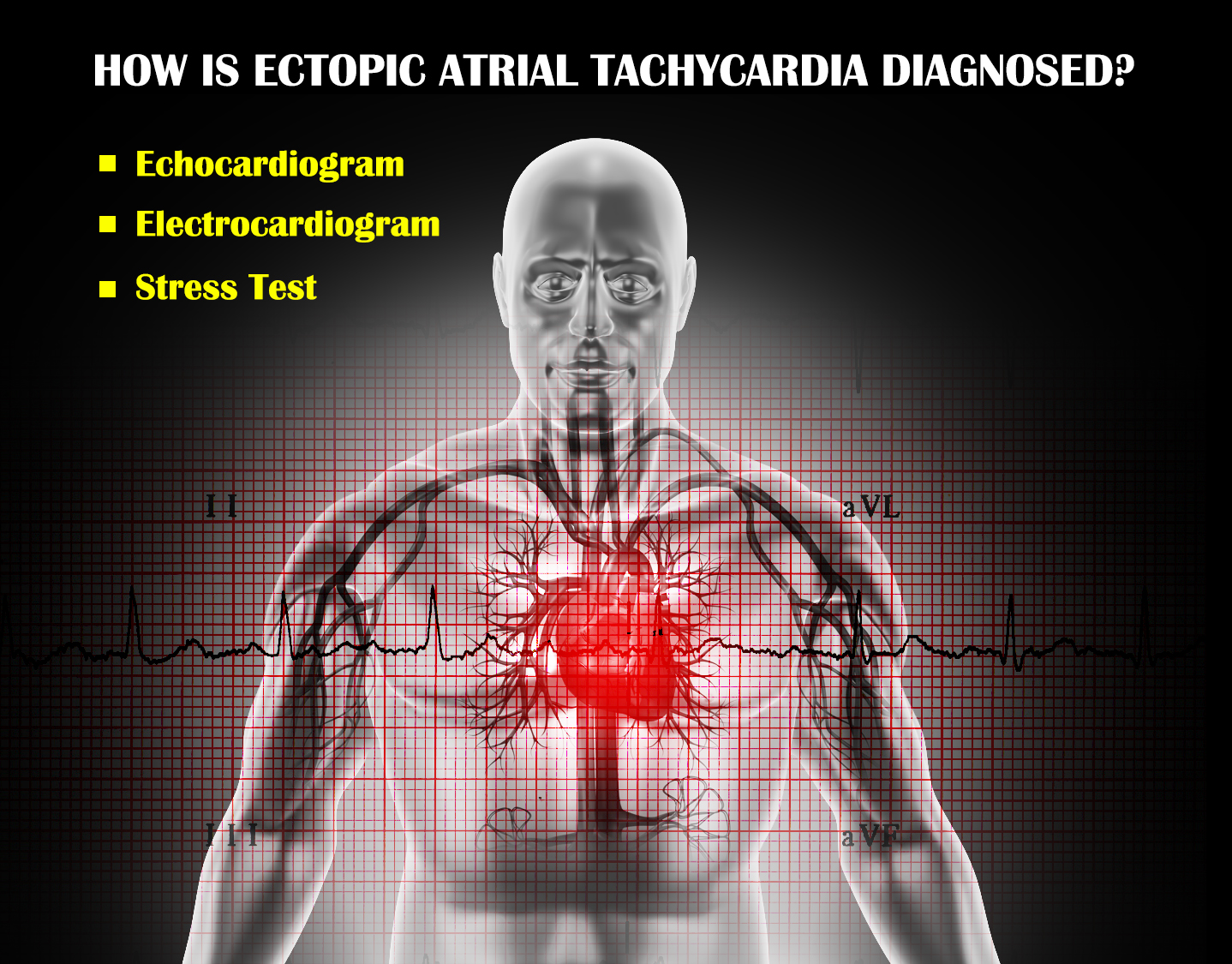What is Ectopic Atrial Tachycardia?
Ectopic Atrial Tachycardia is a rare but potentially serious cardiac condition in which the heart beats abnormally fast with the root cause being malfunction of electrical signals being sent to the heart. This results in rapid contraction of the muscles of the heart thus straining the heart and disrupting the regular blood flow by the heart to various parts of the body and may ultimately result in heart failure. In adults one of the reasons for Ectopic Atrial Tachycardia maybe a malfunctioning atria, although in children there may be other factors which may cause Ectopic Atrial Tachycardia. This condition is pretty rare in the adult population but is quite a common cause for supraventricular tachycardia in children. This condition may cause the heart rate to increase to as high as 250 to 300 beats per minute.

What Causes Ectopic Atrial Tachycardia?
Atrial Ectopic Tachycardia normally does not have a root cause. It may be caused sometimes due to a viral infection like the RSV virus. In some cases atrial tumors have been responsible for development of Ectopic Atrial Tachycardia. Literature also suggests a genetic link to the development of Ectopic Atrial Tachycardia. People with congenital heart defects are at increased risk for developing Ectopic Atrial Tachycardia.
What are the Symptoms of Ectopic Atrial Tachycardia?
In cases of children, some of the symptoms of Ectopic Atrial Tachycardia are:
- Palpitations
- Dyspnea at rest or with activity
- Decreased ability to play or perform other activities
- Appetite loss.
- In cases of adults, some of the symptoms of Ectopic Atrial Tachycardia observed are:
- Chest pain
- Dyspnea with or without exertion
- Rapid breathing
- Heart pounding
- Dizziness
- Syncopal events.
How is Ectopic Atrial Tachycardia Diagnosed?
Ectopic Atrial Tachycardia can be easily identified by doing the following tests:
Echocardiogram: This test makes use of ultrasound waves to look at the functioning of the heart. This test can accurately identify any abnormality of the functioning of the heart.
Electrocardiogram: This test shows the heartbeat in the form of electrical impulses. This test can show whether there is any abnormality in the rhythm of the heart and whether the heart is functioning normally.
Stress Test: This is a test in which the patient is asked to walk on a treadmill to simulate an environment of stress while the patient is connected to cardiac monitors. The cardiac activity is monitored to see if there is any abnormality present in the functioning of the heart.
How is Ectopic Atrial Tachycardia Treated?
Ectopic Atrial Tachycardia can be effectively treated with medications and therapy, although in rare cases a surgery may be required to correct the rate. Medication wise, treatment for this condition consists of medications like digoxin or other antiarrhythmic medications and beta blockers to control the rate of the heart and return the rate back to normal. The medication will also help facilitate treatment of any damage done to the SA node and thus restore normalcy in beating of the heart. In extremely rare cases, a catheter ablation procedure may be required to correct the problem and restore normal heart rate. This is a noninvasive procedure in which first the damaged area where the abnormal signal is originating from is identified and a catheter is placed at that area and then sound waves are used to destroy that area using heat energy and restore the heart rate back to normal. As stated, this is the last resort when all other treatment measures fail to correct the problem.

It is highly recommended that it you have been diagnosed as having Ectopic Atrial Tachycardia then to seek treatment as early as possible to prevent complications like hypertension, stroke, heart attack and the like. This condition is potentially serious and early treatment is suggested especially in the elderly population and children or infants.
